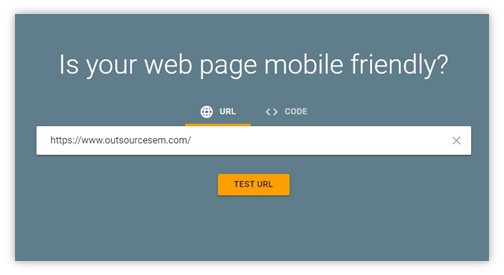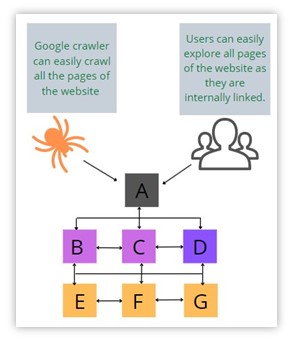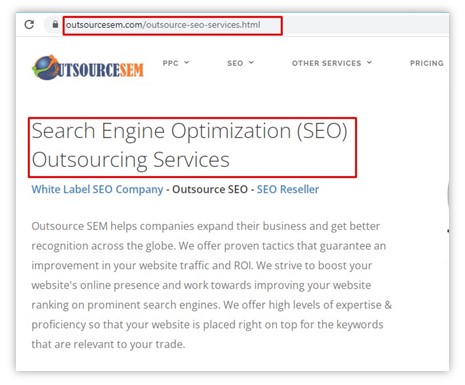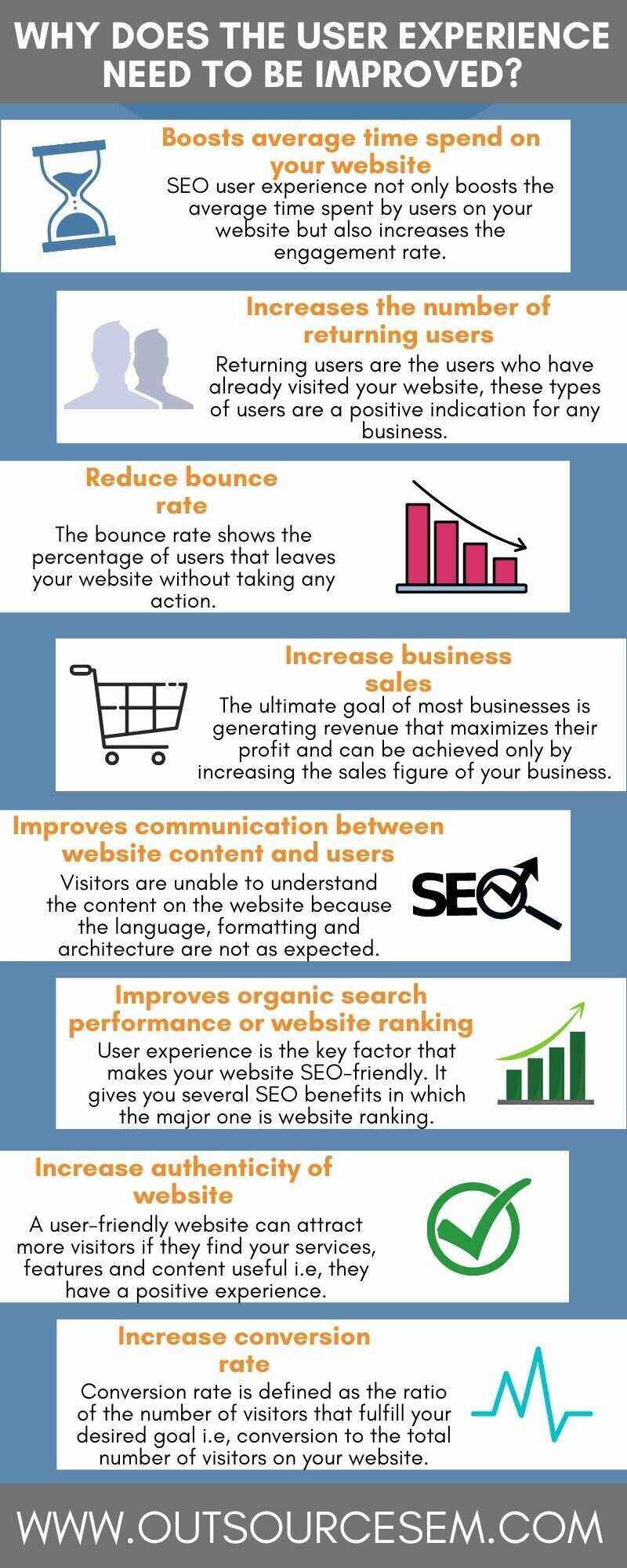With numerous websites indexed on the search engines daily, not all get ranked on the top position in the search results for the keywords or search terms entered. To achieve the top positions for the products or services you offer, you need to formulate an SEO plan & strategy. Attracting users to your business is critical and boosting user experience should be an integral part of your SEO strategy so that the users choose your brand ahead of competitors. You need to enhance the website user experience to get a better SEO ranking as even search engines prioritize websites that are easier to navigate for the users. The UX strategy should be on the top of every website or business owner's list of priorities. To make your website SEO-friendly or to rank your website on search engine results pages (SERPs), it is essential to improve the SEO user experience.
What is SEO user experience?
The name itself is self-explanatory! Users' overall experience of your website while loading, navigating, watching videos, shopping, etc., makes the UX. It is the real-time human experience of your website. As SEO helps in improving and boosting website visibility and rankings, UX is mainly for your website visitors, but when both work in tandem, it gives web users the most relevant and useful search results relating to their search query.
User experience greatly affects your website's SEO. Many factors are responsible for ruining UX, such as page speed, broken or irrelevant links, orphan pages, unrelated page titles, poor content, etc.
Let’s assume a situation where you created a website and indexed it on Google. The meta description of the site is different from the content inside it as it just summarizes what the visitor can expect on the page. While exploring your site, users have to wait for a minute for it to load. After opening many unnecessary ads or pop-ups that are exhibited on it, users found no links to explore other pages. Some of the pages are not found and display 404 errors. The consequence of these mistakes will upset users and they will quickly exit your website because the experience of users on your site is poor.
Thus, when working on a website, you need to have a clear goal in your mind that it is so convenient and well organized so that the users can easily interact with it, understand the content and take the intended action on your site. A good user experience is key to designing and achieving your business goals.

Why does the SEO user experience need to be improved?
• Boosts average time spend on your website - It is not enough to only increase the click-through rate (CTR). If the users are not spending time on your website, it is not a good signal for your SEO campaign. Higher the bounce rate (the percentage of visitors that leaves your website without taking any action) of your website lowers the chances of ranking in search results. Bad UX is one of the main reasons for a higher bounce rate. Enhanced SEO user experience not only boosts the average time spent by users on your website but also increases the engagement rate and time. More satisfactory UX is directly related to the better attention of users to your website and its content.
• Increases the number of returning users - Returning users are the users who have already visited your website. These users are a positive indication for your business or website that you are doing well in your domain. If you provide good services and facilities to users, they will surely revisit your website. User experience has the ability that converts new users into returning ones. Website owners only focus on driving traffic or adding new users to their site. But you have to also focus on returning users because these users are easy to target and can easily convert into your business's potential customers than the new users. For this, you have to plan and implement a better UX strategy according to your targeted audience.

• Reduce bounce rate - The bounce rate shows the percentage of users that leaves your website without taking any action. If any users click on your website and depart from it without clicking on any other page or link, it is counted in your website's bounce rate. There can be multiple reasons for the high bounce rate on your page, but the poor website user experience is the most common reason. It includes slow page speed, low content quality, too many pop-ups, technical errors, etc. Improved user experience can significantly solve your bounce rate issue and strengthen your SEO strategy.
• Increase business sales - The ultimate goal of most businesses is generating revenue that maximizes their profit and it can be achieved only by increasing the sales figure of your business. It becomes more critical for e-commerce businesses to improve user experience as much as possible because their sales mainly depend on how nicely they interact with their visitors. If customers cannot connect with your business, services or products, they will not purchase on your site. This lowers the business sales, and your whole efforts can be ruined only for the lack of a better UX strategy. 74% of in-store shoppers stated that they search the web before shopping, like the closest store near me, location, direction, business hours, etc. Therefore, it is crucial to do user experience research and work on it to increase your ranking on the search engine results pages. You have to improve user experience, whether optimizing for local SEO or national SEO.

• Improves communication between website content and users - Many website owners have unorganized or confusing website designs. Visitors are unable to understand the content on the website because the language, formatting and architecture are not as expected. Also, many websites have issues with navigation and internal linking that users cannot understand how they explore the other pages within the website and how to get out of it? These issues leave a bad impression of your website, especially on the new users. It would be best if you considered developing a well-organized and properly optimized website, especially the homepage so that it can be easy to explore each page of the site. The contents should be precise so that visitors can easily interact and understand its intent. Good user experience automatically connects users with your website and its content so that they can fulfill your website's targeted goal.
• Improves organic search performance or website ranking - User experience is the critical factor that makes your website SEO-friendly. It gives you several SEO benefits in which, the major one being website ranking. When users spend an enormous amount of time on your website because they experience a low bounce rate, good page loading speed, better engagement rate, etc., the combination of all factors helps in the website ranking. It also signals to search engines that you have useful content on your website and answers the questions to users' search queries. Search engines can provide you with a good website ranking as it prefers sites that supply users with the most accurate and relevant piece of information. You can easily gain ranking in organic search results even at the first position.
• Increase authenticity of website - The more easily users can navigate through your site, the better the experience. A user-friendly website can attract more visitors if they find your services, features and content helpful. It shows they have a positive experience. They provide you with good ratings and reviews, which increase the authenticity of your website. More clicks on the site, useful content, accessible website design and positive UX also help build the website’s authority. But you should be careful that your website does not contain referrals to spammy or irrelevant websites. Use meta descriptions and the titles suitable for the pages on your website so that search engines also get the idea about the page's content. You can quickly check your website's authority with the help of the Ahrefs Website “Authority” Checker tool.
• Increase conversion rate - Conversion rate is a metric that measures the effectiveness of your digital marketing campaign. It is defined as the ratio of the number of visitors that fulfill your desired goal to the total number of visitors on your website. For any business or website, only increasing the number of visitors is not enough, but it should also focus on how to increase the number of potential customers that complete the website’s goal. The targeted goal can be different from site to site. Filling out forms, making purchases, clicking on the links, reading the blogs, signing up, etc., are some goals for the websites. SEO user experience can be a vital part of your UX strategy that attracts more users to the website and helps in boosting your conversion rate.

Some tips to improve user experience
• Check for broken backlinks - Broken backlinks are the hyperlinks that no longer work. This generally appears with a ‘404 error’ or ‘page not found'. The broken backlinks reduce the website user experience as visitors and search engines both do not expect it from a useful website. Check for any backlinks that are broken on your website with the help of SEO tools like Screaming Frog, Ahrefs tool, etc. Remove these links or replace them with genuine ones. You can also use 301 redirects which is a permanent redirect that sends all the traffic that arrives on the broken URL to a new URL.

• Increase page loading speed - Page loading speed is one of the main reasons for the high bounce rate on websites. As the content on the website increases, the page speed will slow down. Enhanced page speed improves user experience, boosts your ranking in search engines, and strengthens your SEO strategy. The importance of page speed in making UX can be understood with the fact that if your website loading time increases from 1 second to 3 seconds, the probability of bounce increases to 32%.
You can check PageSpeed Insights or other SEO tools to know your page speed. Compressing and optimizing images on your site, using fewer redirects, avoiding unnecessary plugins, enabling browser caching, etc., are some effective methods that can significantly help enhance your page speed.
• Mobile-friendly site - According to a study, 73% of total internet users will access the internet via their smartphones by 2025, almost three-quarters of the total users. In this condition, if your website is not optimized for mobile devices, you will lose a great amount of traffic. Use Google’s Mobile-Friendly Test to know how compatible is your website with mobile devices.

• Website architecture - Proper website design and architecture are vital for an efficient and effective SEO strategy. Website architecture includes several components like navigation, optimized internal linking, header and footer menu, proper image position and optimization, ad formatting, a well-organized site, etc. It is a structure of pages on your website connected through internal linking. It helps users and search engine crawlers index each page of the website. The more easy and simple structure, the greater the SEO user experience.
You should keep a simple navigation menu that is correctly internally linked to make pages on your website accessible within 3 or 4 clicks. The URL of your web pages should be user-friendly and straightforward related to the content on the page. You should create and submit an XML or HTML sitemap so that search engine crawlers can easily crawl and index all pages on your website. A well-organized website structure is helpful for both users and search engines.

• Keep relevancy between titles, URLs, and webpages - The website or web page's title is the first point of interaction between users and the content of the page. Thus, it is essential to keep it appealing and eye-catching so that it grabs users' attention. Try to keep proper relevancy between titles, URLs and web pages so that there should not be a situation where there is a mismatch in the title and content of the page. This practice would ruin the website user experience.

Final thought
The most primary and challenging task for website owners is keeping a smooth SEO user experience and maintaining their website with current SEO practices. User experience research is vital in your SEO strategy and website design. Do some user experience research to keep an idea of your visitor's queries and try to answer their questions. Quality content and attractive website design can improve user experience to a great extent. Websites' SEO and user experience optimization is a never-ending process and you can optimize it as much as you can. Also, you can take help from an SEO company that provides SEO services in framing a digital marketing campaign that boosts your UX strategy and SEO campaigns. Furthermore, if you own a business in the painting, plumbing, construction, appliance repair, or HVAC industry and are struggling to attract customers, our top-notch SEO services can help. We offer painting SEO, plumbing SEO, construction SEO, appliance repair SEO, and HVAC SEO to help your business rank at the top of search engine results pages and improve your online visibility.
References
• How to create optimal user experiences by improving your website’s information architecture
• 12 Tried-and-true ways to improve user experience
• 12 Ways to improve a customer's user experience

